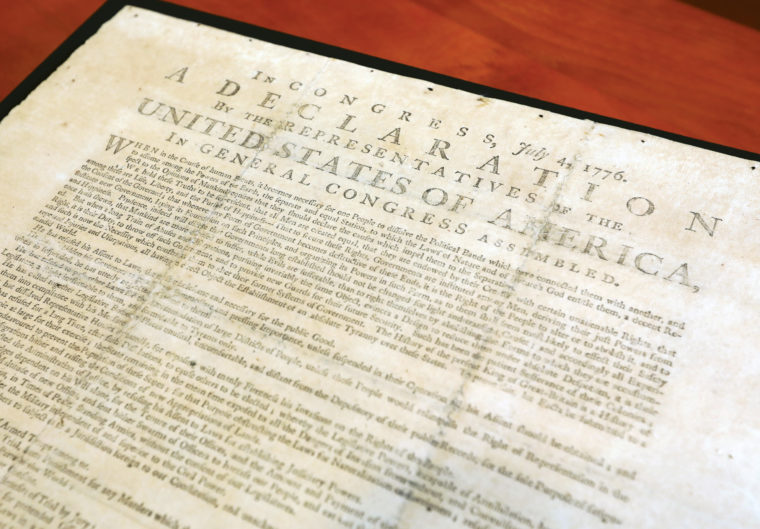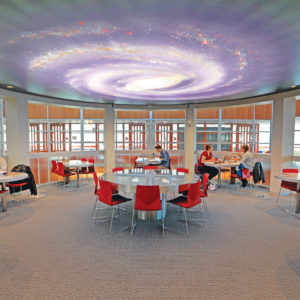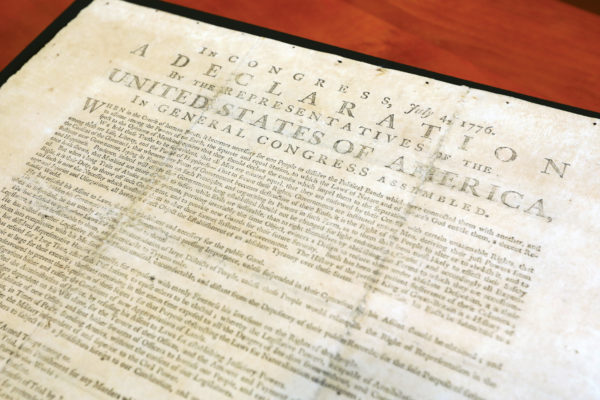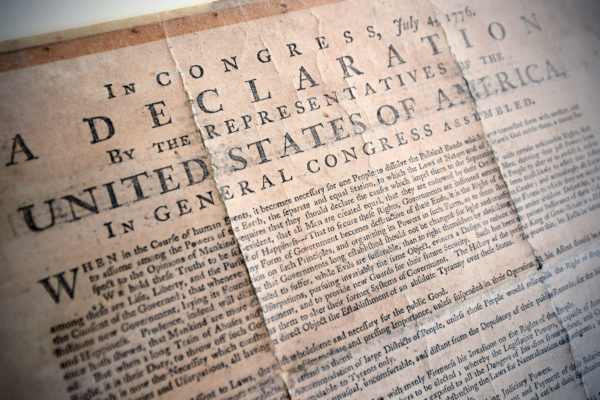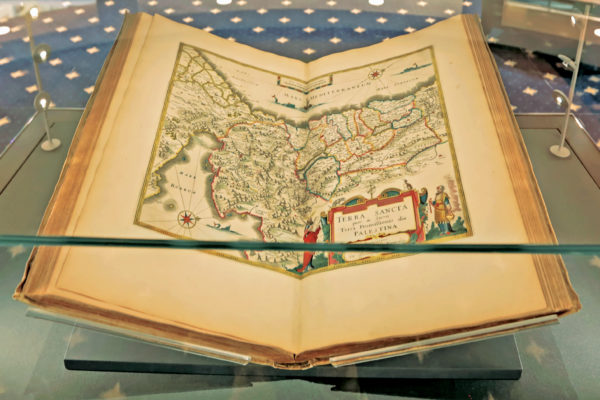Incredibly rare. Undeniably powerful.
That is how Cassie Brand, curator of rare books at University Libraries, describes the original copy of the Declaration of Independence now on display by the Jack E. and Debbie T. Thomas Gallery at Olin Library. “To stand in the presence of this founding document is an amazing experience,” Brand says. “You are transported to one of our nation’s most historic moments.”
The copy, known as the Southwick Broadside, was a gift of the family of philanthropists Eric and Evelyn Newman. Eric Newman passed away in 2017 at the age of 106. His wife, Evelyn Newman, died in 2005 at 95.
Here, Brand discusses how Olin Library prepared this unique artifact for exhibit, the role of the broadside in colonial America and what lessons the Declaration imparts today.
Q: What is the Southwick Broadside?
CB: As we learned in history class, the Continental Congress adopted the Declaration of Independence on July 4, 1776. But the handwritten copy in the National Archives was not signed until Aug. 2, 1776. Between those dates, copies of the Declaration — known as broadsides — were printed and posted in town squares all across the colonies. Ours, printed by Solomon Southwick, was posted in Rhode Island. Only seven Southwick broadsides exist today.
Q: What steps have the University Libraries taken to protect this document?
CB: First, we had to reverse previous conservation efforts. It had been what is called “silked,” which is where you glue a piece of silk fabric on top of a document to stabilize the paper. That made the text difficult to see. The conservators removed that silk and gave it a bath — literally. By putting it into a bath of filtered water and alcohol, the conservators reduced the staining and removed the silk. It’s a scary idea, but conservators always test everything before they do any type of treatment.
We also designed the Declaration Chamber specifically to suit the needs of the document. The chamber has humidity and temperature controls, and the light is very low to reduce fading. It also is shielded from UV light from the doors and windows. And we will rest the Declaration, which means every once in a while we will take it out of the chamber and put it back in the vault without light.
Q: What else have you included in the exhibit?
CB: We have an amazing touch-screen display where you can touch spots on a digital Declaration of Independence to learn more about certain phrases used in the document and the people who signed it. Also, we have a small auxiliary case for rotating displays that will keep the exhibit fresh and add new context. Our first display showcases several books owned by Thomas Jefferson, the author of the Declaration. We have the world’s third-largest collection of Jefferson books.
For more on the university’s copy of the Declaration of Independence, listen to the Hold That Thought podcast, “The Southwick Broadside” at or click here.
